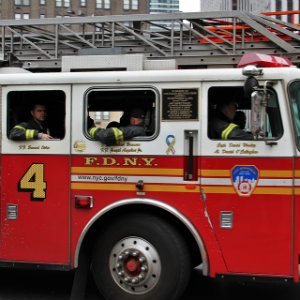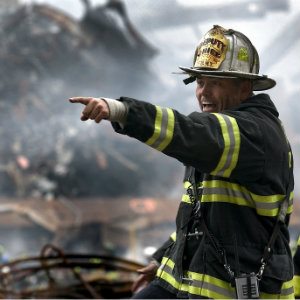Every day, New York's firefighters willingly expose themselves to a variety of dangers in order to save endangered civilians. These brave individuals are at risk of contracting various occupational injuries and illnesses due to burns, smoke inhalation, and heavy lifting - just to name a few common hazards. Firefighters are aware of these dangers, but selflessly choose to take these risks to help others.
No firefighter should have to worry about how he or she will support themselves if they get hurt on the job. Serious injuries and illnesses require time missed from work, costly medical care, and other related expenses. Most New Yorkers are entitled to compensation for these expenses through Workers' Compensation. Firefighters are not covered under these benefits, but there are other available forms of compensation.
Learn more about electrical work accidents and how workers' comp can help: https://banvillelaw.com/workers-compensation/hazardous-jobs/electrical-work/
Your compensation options depend on your classification as a firefighter. Volunteer firefighters are eligible for benefits through the Volunteer Firefighters Law - these benefits are similar to what you'd receive under Workers' Compensation. Uniformed FDNY firefighters are not provided any form of work injury benefits.
However, there are still ways for injured NYC firefighters to receive the compensation they need. Employees covered under Workers' Compensation are almost always prohibited from filing a lawsuit against a co-worker or employer, but this doesn't apply to the small minority of workers who are not covered by WC. This means that injured firefighters are permitted to file a lawsuit against a negligent co-worker, employer, or third party who was responsible for causing their work injury.
While firefighting may be an inherently dangerous profession, this does not mean that all firefighter injuries are easily foreseeable. While many injuries and accidents may occur due to the inherently dangerous nature of firefighting, some injuries could have been prevented if it weren't for the negligence of another party.
In any personal injury claim, it's necessary to prove that your injuries were the direct result of someone else's negligence. Negligence is legally defined as an unreasonable action or omission which endangers someone else. Under this principle, NYC firefighters may sue for work injuries if the injuries occurred due to someone else's violation of a statute, rule, or regulation on either the federal, state or local level.
Commonly violated statutes which could result in a firefighter personal injury lawsuit include:
In some cases, firefighters may sue the individual responsible for causing the fire due to some form of negligence.
Every day, firefighters expose themselves to the risk of several types of serious injuries. Common causes include:
Of course, firefighters are at risk of burn injuries when they enter ablaze. Turnout gear is designed to protect firefighters from burns by providing a heat-resistant barrier, but this gear can only go so far. Protective gear may fail if the temperatures are too high or if the firefighter is exposed to flames for too long.
Recovering from a burn injury is a long, expensive, and painful process. Burn victims usually require long-term hospital stays, surgery, skin grafts, and other expensive medical treatments.
According to a report by the National Fire Protection Association (NFPA), in 2015, overexertion was tied with falls for the most common cause of firefighter injuries, with each category accounting for 27.2% of injuries. While in the line of duty, firefighters are frequently required to lift, push, carry, and move large objects and people. This can lead to muscle strains, sprains, and tears. Over time, overexertion can also lead to repetitive stress injuries.
Firefighting has several inherent slip, trip, and fall risks. These accidents can occur either while at the station or in the line of duty. The station should always be well-maintained for such hazards as slippery floors, uneven surfaces, obstructive objects, and liquid spills. While in the line of duty, firefighters are at risk of slip and falls due to similar hazardous conditions, as well as falls from ladders or through collapsing floors.
Smoke inhalation is the leading cause of fire-related deaths. Firefighters are provided with self-contained breathing apparatuses which protect against smoke inhalation. Occasionally, breathing equipment may be faulty due to a product defect, in which case an injured firefighter could sue the manufacturer for product liability.
Years of exposure to these conditions can often lead to cumulative respiratory diseases, such as emphysema, lung cancer, and chronic obstructive pulmonary disorder (COPD).
If you contracted a respiratory illness as a first responder to the 9/11 terrorist attacks, you are eligible to receive compensation through the Zadroga Act. This act provides health monitoring and financial assistance to all first responders and survivors of these attacks.
Firefighters are regularly exposed to toxic chemicals as well as infectious diseases. During a fire, the combustion of certain building materials may release several different types of synthetic chemicals. Firefighters may be exposed to these chemicals through inhalation or contact with the skin.
According to the previously referenced NFPA report, in 2015 there were 8,350 documented exposures to infectious diseases such as hepatitis, meningitis, and HIV. This most commonly occurs when firefighters are assisting bleeding victims who have an infectious disease.
Firefighters can easily be injured due to contact with falling objects. Even small objects can cause injuries if dropped from a high enough distance, but firefighters must move through buildings quickly while avoiding falling beams and other structural materials. Blunt force trauma can cause permanently disabling injuries, such as traumatic brain injuries and spinal cord injuries, and this trauma can often be fatal.
Seeking compensation as an injured firefighter can seem like an intimidating prospect. You may worry that you don't have a case because of the well-known dangers of your profession. While some injuries may be part of the job, firefighters who have been injured due to another party's negligence deserve financial compensation.
Banville Law's dedicated NYC work injury lawyers are well-versed in New York City's local statutes, as well as relevant state-wide and federal rules and regulations. We know how to establish negligence and how to hold negligent parties liable for causing an injury.
When a firefighter gets injured while putting their life on the line for others, they deserve financial assistance while they recover from their injuries. That's why we're proud to help injured firefighters secure the maximum compensation they deserve.
Visit our next article for more educational reading: https://banvillelaw.com/workers-compensation/hazardous-jobs/healthcare/

